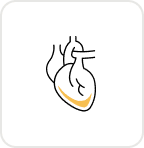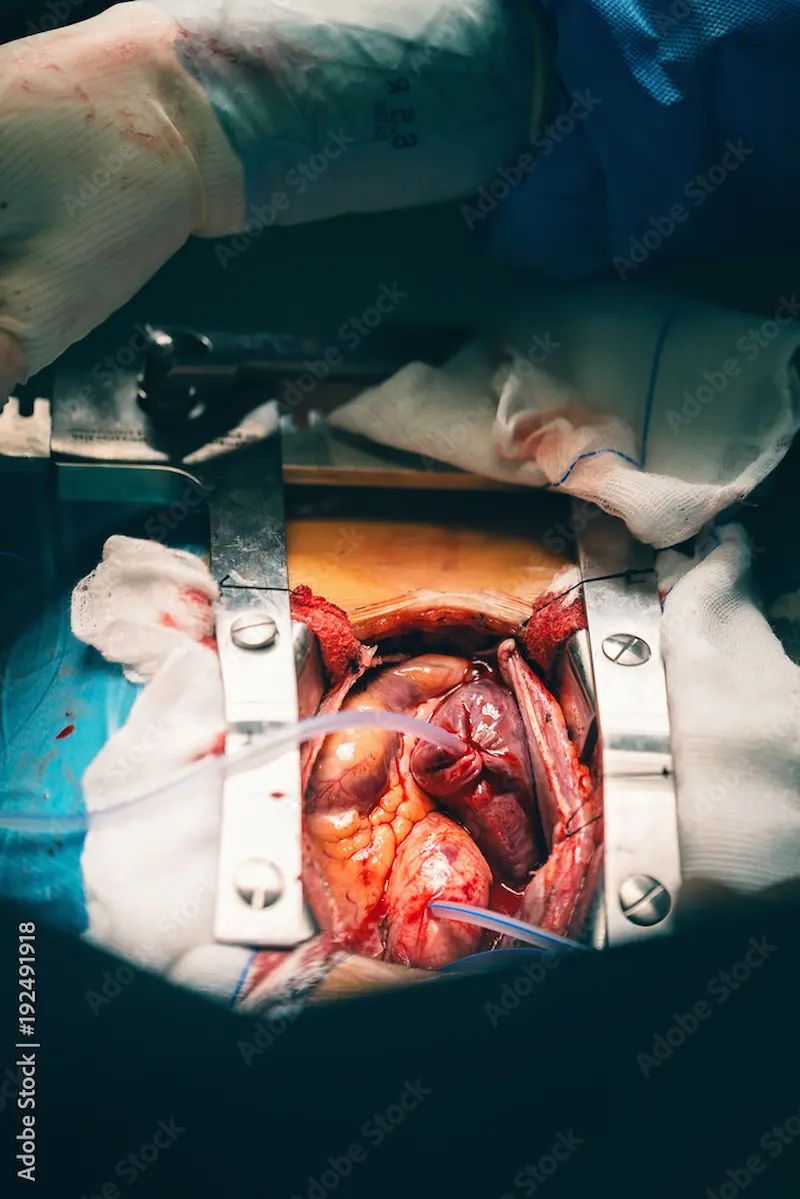Triple Vessel Disease Of The Heart: Causes, Symptoms And Treatment
Learn about triple vessel disease, a severe form of coronary artery disease that impacts the right coronary artery, left anterior descending, and left circumflex arteries. Early detection and proper management are crucial for heart health.

Written by Dr Sonia Bhatt
Last updated on 3rd Jul, 2025
Coronary artery disease (CAD) is the most rampant disease today that affects millions of people around the globe. It is a disease that develops when blood vessels supplying blood to the heart start getting clogged or become narrowed due to the formation of plaque. As a result, one gets a limited oxygen supply in heart muscles, which causes chest pain and, in its worst magnitude, a heart attack. In all the forms of CAD, triple vessel disease (TVD) stands as one of the most severe forms in cardiology.
Triple vessel disease causes complete vital obstruction of the three prime coronary arteries—the right coronary artery (RCA), left anterior descending (LAD) and left circumflex (LCx). This extensive arterial occlusion jeopardises the integrity of the arterial system and, by extension, cardiac functionality and health.
Causes
The development of triple vessel disease is influenced by multiple risk factors and a complex pathophysiological process. It is predominant in men and increases with age; however, post-menopausal women are also included in the list of people under high risk. Smoking, a sedentary lifestyle, and diets high in fats and cholesterol are often underlying causes of this disease, while illnesses such as diabetes, obesity, and hypertension are known to increase the risk of developing it. However, it is also essential to note that people with a history of heart disease in the family are more prone to be diagnosed with CAD and, if developed, TVD.
TVD aetiology and pathogenesis are associated with endothelial damage in the arteries’ inner layer. This damage results from high pressure, smoking, high cholesterol levels, fat, and other substances building up on the arterial walls. These particles deposit on vessels over a period and build up to form plaques, which can then become rigid and narrow the blood vessels.
Symptoms and Diagnosis
The most common symptom of triple vessel disease is primarily caused by reduced blood flow to the heart muscles, resulting from severe blockage of the coronary arteries. It is a state which presents a spectrum of complications—from mere discomfort to life-threatening crises. Chest pain, specifically a feeling of pressure or tightness, called angina, is a major sign and is usually precipitated by activities as simple as walking or even stress. Some patients also feel out of breath, a condition which suggests that the heart is unable to pump adequate amounts of oxygenated blood to the rest of the body. Steady tiredness while performing usual tasks can be an early sign of reduced performance of the heart muscle. In critical situations, a heart attack may happen, and its symptoms include severe and persistent chest pain, pain that travels to the arm and jaw, feeling nauseous, vomiting and experiencing cold sweat and dizziness.
The diagnosis process plays a crucial role in treating triple vessel disease as it determines the precise type of disease with the affected vessels. Healthcare workers use both clinical assessment and specialised testing to identify the condition and its severity.
Occupational employment ECG electrocardiographic examinations help to reveal changes in the electrical activity of the heart muscle. On the other hand, stress tests indicate functional problems by evaluating the ability of the heart to respond to physical or pharmacological stress. Additional diagnostic tests such as ultrasound, angiography and computed tomography give clear depictions of the heart and the degree of blockage, helping find ideal intervention procedures.
Check Your Triple Vessel Disease Symptoms
Key Symptoms:
Angina (Chest Pain): A squeezing or pressing pain often worsened by physical activity or stress.
Shortness of Breath: Difficulty breathing due to reduced oxygen supply to the heart.
Fatigue: Persistent tiredness, especially during routine activities.
Heart Attack Symptoms: Severe chest pain, pain radiating to the arm or jaw, nausea, cold sweats, and dizziness.
Diagnostic Tools:
Electrocardiogram (ECG): Detects electrical abnormalities in the heart, such as ischemia or damage.
Stress Testing: Evaluates heart function under exertion or medication-induced stress.
Echocardiogram: Uses ultrasound to visualise the heart’s structure and assess its functionality.
Coronary Angiography: Pinpoints blockages in the coronary arteries using X-rays.
Cardiac CT Scan: Provides a detailed, non-invasive view of arterial plaques and calcifications.
Pathophysiology
Triple vessel disease severely impairs the flow of blood through the coronary arteries, most especially during exertion. As a consequence, the lack of oxygen, known as ischemia, begins to harm the myocardial tissues.
Long-term ischemia damages and dilates the myocardium and impairs the heart’s ability to pump blood. This may result in congestive heart failure, in which the heart is unable to supply the body’s need for oxygen and nutrients. It is important to note that the persistence of ischemia amplifies the likelihood of a myocardial infarction (heart attack).
Treatment Options
Triple vessel disease treatment entails medication in combination with bypass surgery and other procedures. Antiplatelet agents, beta-blockers, statins, and calcium channel blockers are typically used to treat the patient’s condition. These drugs make it easier to clear blood clots, decrease cholesterol levels, and prevent chest pains.
In severe cases, however, surgery can be required to fix the problem. Myocardial revascularisation is another routine surgical intervention in which pieces of saphenous veins or internal mammary arteries are implanted to bypass the occluded coronary arteries. In addition, there is another procedure called angioplasty, where a small balloon is inserted and inflated to open blockages in arteries, and then a stent is inserted to stabilise the area.
Lifestyle Modifications
The ultimate approach to handling triple vessel disease is to embrace heart-friendly ways of living, compounded with having to undergo other related treatments. A diet filled with fruits, vegetables and whole-grain foods instead of bad fats lowers cholesterol. Physical activity has a positive effect on important aspects as well, such as cardiovascular fitness, prevention of obesity, stress on the heart, etc.
Quitting smoking is particularly important, as tobacco use damages arterial walls and accelerates plaque formation. Stress management through mindfulness, yoga, or relaxation techniques can also contribute to better heart health.
Prognosis
The prognosis of triple vessel disease depends on the severity of blockages, timely treatment, and lifestyle changes. Advances in medical and surgical interventions, such as CABG and angioplasty, have significantly improved survival rates by restoring blood flow and reducing symptoms. Medications like beta-blockers and statins help stabilise the condition and prevent complications.
Long-term outcomes are better for patients who adhere to treatments and maintain a heart-healthy lifestyle, including a nutritious diet, regular exercise, and quitting smoking. However, untreated or poorly managed cases face risks like recurrent heart attacks, arrhythmias, and chronic heart failure, which can weaken the heart and impair its function. Regular follow-ups with healthcare providers are essential for monitoring and managing the disease effectively.
Long-Term Outcomes and Survival Rates:
Fortunately, advances in therapies like CABG and angioplasty have improved survival rates. Timely treatment and lifestyle changes such as diet, exercise, and quitting smoking, are crucial for better outcomes.
While the prognosis for triple vessel disease is significantly better today than in previous decades, it requires a proactive approach from both patients and healthcare providers.
Prevention
Preventing triple vessel disease requires managing risks and regular health check-ups. There are several ways people can ensure strong cardiovascular health. Including-
Balanced Diet: Focus on heart-healthy foods
Regular Exercise: Stay physically active
Quit Smoking: Avoid tobacco completely
Routine Check-ups: Detect early signs of disease
Control Conditions: Manage blood pressure, diabetes, and cholesterol
Conclusion
Triple vessel disease is a serious manifestation of coronary artery disease that requires a comprehensive approach to management and prevention. Early detection, effective treatment, and lifestyle changes are essential for improving outcomes and reducing the risk of complications. By prioritising heart health and seeking timely medical care, individuals can mitigate the impact of this life-threatening condition and lead healthier lives.
Consult Top Cardiologists
Check Your Triple Vessel Disease Symptoms
₹800(₹2000)60% off
Consult Top Cardiologists

Dr. Anand Ravi
General Physician
2 Years • MBBS
Bengaluru
PRESTIGE SHANTHINIKETAN - SOCIETY CLINIC, Bengaluru

Dr. Tripti Deb
Cardiologist
40 Years • MBBS, MD, DM, FACC, FESC
Hyderabad
Apollo Hospitals Jubilee Hills, Hyderabad

Dr. Zulkarnain
General Physician
2 Years • MBBS, PGDM, FFM
Bengaluru
PRESTIGE SHANTHINIKETAN - SOCIETY CLINIC, Bengaluru

Dr. Janjirala Seshivardhan
Cardiologist
7 Years • MBBS,DNB(GM),DM(Cardiology)
Manikonda Jagir
Apollo Clinic, Manikonda, Manikonda Jagir

Dr. E Prabhakar Sastry
General Physician/ Internal Medicine Specialist
40 Years • MD(Internal Medicine)
Manikonda Jagir
Apollo Clinic, Manikonda, Manikonda Jagir
(150+ Patients)



